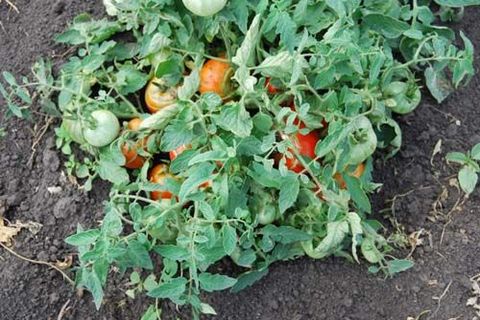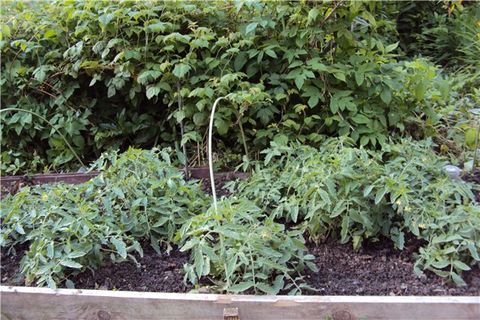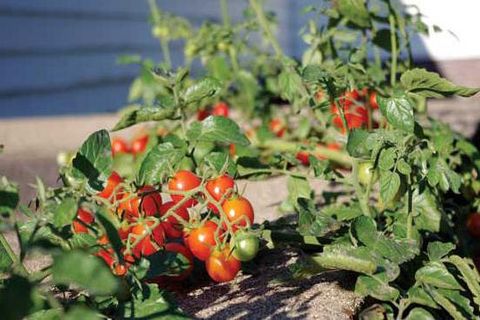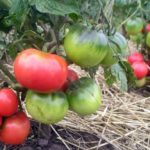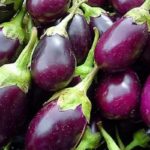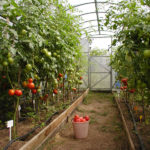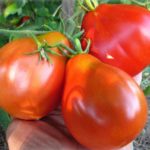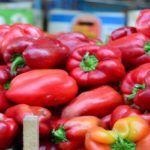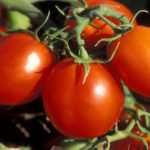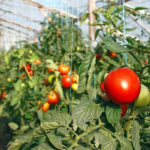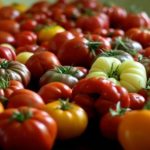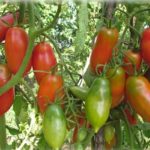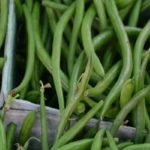The Japanese dwarf varietal tomato has become very popular among gardeners in recent years. It is attracted by its interesting name, early maturity and unpretentiousness. The entire crop ripens on the vine. The variety is suitable for sowing directly into the ground. It is not a hybrid and is easy to collect your seeds from.
So far, the Japanese dwarf tomato variety cannot be found in Russian garden stores. Officially, it is packaged by the Kazakh seed company Invent Plus. It is possible to obtain Japanese dwarf seeds from amateur vegetable growers. Reviews about this variety are very contradictory. To get a good return, you need to take into account all the advantages of the Japanese dwarf and use them wisely.
Varietal features
Japanese dwarf is an unpretentious variety, but this does not mean that tomatoes grow successfully on their own. Tomatoes require at least minimal care.
Formation
Japanese dwarf tomatoes are determinate, but not super low-growing. They grow half a meter from the ground, sometimes even a little higher. When the plant reaches its maximum height, it terminates (stops growing). The secret to getting a normal harvest from this tomato lies in the correct formation of the bush.
That description of the variety, which talks about the uselessness of pinching, is not entirely correct. The experience of gardeners shows that a complete lack of shaping leads to meager yields. Barren flowering stepchildren grow from below and from underground, drawing the lion's share of nutrients onto themselves. A simple event is enough - one-time stepsoning.
For proper formation, approach the bush once during the entire season - at the very beginning, when the first brush blooms. It is required to pluck out all the side branches (stepchildren) below the flower brush, making sure to leave small stumps. No more shoots will grow here. In addition, all the growth that has emerged from below at the base of the main trunk is immediately removed. That's it, the work is finished. The side shoots that will grow above the first brush are left. Plants must be tied up.
The bushes turn out lush on top, but quite compact. This redistribution of nutrition allows you to get a good harvest for an early-ripening variety - more than two kilograms of early-ripened tomatoes from one bush. The fruits will have time to avoid being affected by late blight, which never appears too early.
The compressed type of bush allows for dense planting (6 - 9 roots are placed on one square meter), and the Japanese Dwarf variety is not afraid of shading. This will increase the output from a specific area.
Fruiting
Tomatoes plant their first inflorescence early - sometimes there are already 6 or 7 leaves in the axil. Each cluster bears 3–5 fruits. On average, tomatoes weigh 60–70 grams, but there are also hundred-gram fruits. If the bushes are formed correctly, then they are literally strewn with fruits.
Tomatoes are round in shape, very smooth, bright red. The walls of the fruit are not too thick, but not soft either, but rather dense, which is rare for early-ripening tomatoes. The taste of Japanese dwarf tomatoes ripened in the open air is good, especially in comparison with other early varieties.
Japanese dwarf tomatoes are so early ripening and unpretentious that they manage to form fruits even when grown without seedlings, when directly sown in the ground (in a street greenhouse). In addition, the compact low bush is suitable for harvesting on the balcony or window sill of a city apartment, even with a lack of light. When sown in autumn at home, the tomato will bear fruit in winter and spring.
Mongolian dwarf
In addition to the Japanese dwarf, vegetable growers have fallen in love with the Mongolian dwarf tomato variety. Its name is similar, but its characteristics have its own characteristics.
Plant dimensions
The Mongolian dwarf has an unusual bush structure. First, the main shoot stretches upward, reaches a small height of 15 - 30 cm, and then bends sideways and bends towards the ground. The bush grows with short shoots, spreading out in all directions. It can occupy an area from half a meter to a meter in diameter.
Mongolian dwarf is rightfully considered a super-determinate variety. The root system is superficial, branches not in depth, but in breadth. At first, young plants develop very slowly, then growth accelerates. Spreading shoots do not need garter, and there is no need to pin them down either.
Fruit
Such dwarf bushes produce unexpectedly large fruits, weighing about 200 grams. The average weight is also quite respectable - 170 grams. The tomatoes are round, raspberry-red. Taste is greatly influenced by weather conditions. Sometimes the pulp is a little sour, but quite pleasant, with a typical “tomato” aroma.
The fruit density is quite high. The tomatoes are fleshy, with a small amount of liquid, and transportable. The skin is dense, but can still be damaged by slugs, because the weighty brushes practically lie on the ground. When growing a Mongolian dwarf, it is necessary to lay a layer of mulch (straw, hay, agrofibre) under it.
The Mongolian dwarf variety is early ripening. The fruits begin to ripen very early, sometimes as early as late June - early July. Almost the entire crop turns red on the vine, even in the open ground of the Moscow region and Siberia. The bushes branch and constantly grow new ovaries. Fruiting lasts a long time, until frost. Mongolian dwarf tomatoes are tolerant of cold weather and drought, and resistant to bacterial and fungal infections.
Mongolian dwarf tomatoes Not yet sold in stores. The variety has no official status. Amateur gardeners share the seeds with each other. At first, this tomato was distributed in Transbaikalia and Siberia, and now it is grown by gardeners throughout Russia.

